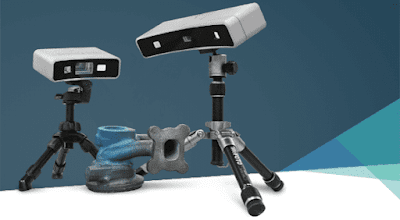A comprehensive guide to understand rendering and animation software
While rendering is most often synonymous with computer-generated animation, it may also refer to the method of generating final animation frames in traditional hand-drawn animation.
In both 2D and 3D digital
animation, rendering is used. That is the method of obtaining the final
completed animation scenes or bits in the form of a series of individual frames
from the computer.
The aim of rendering is to create
a video clip or a sequence of individual pixel-based frames.
Three-dimensional animation, or
3D animation, refers to the creation of characters and backgrounds in these
types of projects in three dimensions. Models, backgrounds, storyboards, and
effects can all be created with Keyshot rendering and
animation software. These tools can be used to create animated
characters for commercials, films, and television shows.
How does 3D metal printing
works?
The parts are fully encapsulated
in the metal powder at the end of the build process. The parts are attached to
the build platform through support structures, unlike polymer powder bed fusion
processes (such as SLS). Metal 3D printing support is made from the same
material as the part and is always required to prevent warping and distortion
caused by high processing temperatures.
The excess powder is manually
removed when the bin reaches room temperature, and the parts are typically heat
treated while still attached to the build platform to relieve any residual
stresses. The components are then cut, machined, or wire EDM detached from the
build plate for metal
3D printing in India.
To position the component images
into the complete final image, the optical scanner's software matches the
targets in adjacent images. It takes time to attach and remove targets, and
they must be properly positioned so that all of the images can be integrated
into the final image. Another option is to use software that can recognize
features of the scanned object, define those features as targets, and use them
to align the individual images. This method necessitates the use of more
advanced software, but it streamlines the scanning process and ensures maximum
accuracy.
The software that comes with the Steinbichler optical blue
light 3D scanner combines multiple scanned images into a 3D surface
image that can be stored, rotated, expanded, and examined in order to evaluate
a part or assembly. The software generates a "point cloud," which is
a collection of points that represents the scanned object. The density of
points, or pixels that represent the virtual object, is determined by the
camera and field of view. The software algorithm removes overlaps between
individual images to create a single, seamless STL (stereo lithography) data
set. Inspection and quality control, tool and model making, reverse
engineering, rapid manufacturing, and other applications can all benefit from
STL files.




Comments
Post a Comment